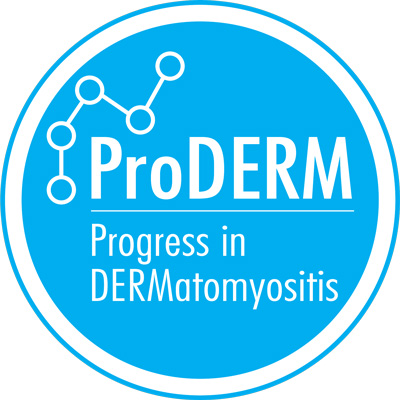Proven Safety and Tolerability in Adult Dermatomyositis
Treatment of Adult Dermatomyositis With octagam 10% Was Generally Well Tolerated1-3
- 62 of 95 patients (65.3%) experienced 282 treatment emergent adverse events
- Most common related adverse events were headache, pyrexia, and nausea
- Majority of adverse events were mild in intensity
| Reactions | No. of Subjects (%) |
|---|---|
| Headache | 40 (42%) |
| Pyrexia | 18 (19%) |
| Nausea | 15 (16%) |
| Vomiting | 8 (8%) |
| Chills | 7 (7%) |
| Musculoskeletal pain | 7 (7%) |
| Blood pressure increased | 6 (6%) |
| Reactions | No. of Subjects (%) |
|---|---|
| Headache | 44 (46%) |
| Pyrexia | 19 (20%) |
| Nausea | 16 (17%) |
| Vomiting | 8 (8%) |
| Blood pressure increased | 8 (8%) |
| Musculoskeletal pain | 5 (5%) |
| Heart rate increased | 5 (5%) |
| Dyspnea | 5 (5%) |
| Infusion site reactions | 5 (5%) |
Incidence of Serious Adverse Events Was Similar for octagam 10% and Placebo During the Double-blind Comparison (First Period)
- 3 patients (5.8%) in the octagam 10% group had 5 serious adverse events and 2 patients (4.2%) in the placebo group had 4 serious treatment-emergent adverse events
- Serious adverse reactions observed in patients: muscle spasms and dyspnea (n=1); loss of consciousness (n=1), and thromboembolic events (n=5)
No subject met the criteria for a hemolytic transfusion reaction during the study. No deaths were reported during the study.
 Thromboembolic Events (TEE) in DM patients:
Thromboembolic Events (TEE) in DM patients:
Implications for ProDERM study
- Some retrospective reports and studies have shown an increased risk of TEEs in patients with DM4,5
- No known cause for increased risk, but acute inflammation seems to contribute to risk via components of the innate immune system
In the ProDERM Study:
- Independent Data Monitoring Committee assessed all possible TEEs
- Infusion rate titration with adjustments for adverse reactions was included in protocol
- Maximum infusion rate was reduced from 0.12 to 0.04 ml/kg/min due to TEE overall rate of 1.54 per 100 patient months
- After reduction of infusion rate was implemented, TEE overall rate decreased to 0.54 per 100
References:
- Octagam 10% Full Prescribing Information. Paramus, NJ: Octapharma; rev March 2022.
- Octapharma. Data on file.
- Aggarwal R, et al. (ProDERM study). Submitted for publication. August 2021.
- Gaitonde SD, Ballou SP. J Rheumat. 2008; 35:11.
- Li Y et al. Ther Clin Risk Manag. 2018; 14:157–165.